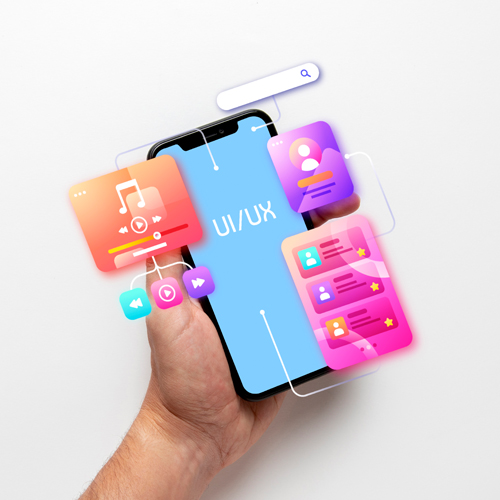As we advance into 2025, the landscape of User Experience (UX) and User Interface (UI) design is evolving at an unprecedented rate. With emerging technologies and changing user expectations, it is essential for designers to adopt best practices that enhance usability, accessibility, and engagement. This blog explores key practices that can help designers create exceptional digital experiences while staying ahead in a competitive market.
1. Embrace Zero Interface Design
Zero interface design focuses on minimalism and simplicity, aiming to create seamless interactions without overwhelming users with information. This trend emphasizes the importance of clean, intuitive interfaces that prioritize essential elements, allowing users to navigate effortlessly.
Implementation Strategies:
Prioritize Core Functions: Identify and highlight the most critical features of your application or website.
Eliminate Clutter: Remove unnecessary elements that could distract users from their primary tasks.
Use Gestures and Voice Commands: Incorporate touch gestures and voice commands to facilitate interactions without traditional interfaces.
By embracing zero interface design, you can create a more user-friendly experience that caters to modern preferences for simplicity and efficiency.
2. Leverage AI for Personalization
Artificial Intelligence (AI) is revolutionizing UX/UI design by enabling highly personalized experiences. In 2025, designers will increasingly leverage AI algorithms to analyze user data and dynamically adjust interfaces based on individual preferences and behaviors.
Benefits of AI-Driven Personalization:
Tailored Content Delivery: Users receive content and product recommendations based on their browsing history and preferences.
Enhanced Engagement: Personalized experiences foster deeper connections between users and brands.
Improved Conversion Rates: Studies show that personalized interfaces can significantly increase purchase likelihood.
Incorporating AI-driven personalization into your designs will enhance user satisfaction and drive engagement.
3. Integrate Augmented Reality (AR) and Virtual Reality (VR)
The integration of Augmented Reality (AR) and Virtual Reality (VR) technologies is transforming how users interact with digital content. In 2025, these immersive technologies will become more accessible for designers looking to create engaging experiences.
Key Applications:
Product Visualization: Allow users to visualize products in their environment using AR before making a purchase.
Immersive Experiences: Create virtual environments where users can interact with products or services in a simulated space.
Enhanced Learning: Utilize VR for educational platforms to provide interactive learning experiences.
By integrating AR and VR into your designs, you can create unique experiences that captivate users and differentiate your brand.
4. Prioritize Accessibility in Design
Accessibility is a crucial aspect of UX/UI design that ensures all users, regardless of their abilities, can interact with your digital products effectively. As awareness of accessibility issues grows, designers must prioritize inclusive practices in their work.
Best Practices for Accessibility:
Semantic HTML: Use semantic elements to improve compatibility with screen readers.
Color Contrast: Ensure sufficient contrast between text and background colors for readability.
Keyboard Navigation: Design interfaces that are fully navigable using keyboard shortcuts for users with mobility impairments.
By prioritizing accessibility in your designs, you can reach a broader audience while demonstrating a commitment to inclusivity.
5. Implement Dark Mode Options
Dark mode has gained immense popularity as an alternative interface option that reduces eye strain and enhances readability. In 2025, offering dark mode as a design choice will become increasingly important for user satisfaction.
Benefits of Dark Mode:
Reduced Eye Strain: Dark mode provides a more comfortable reading experience, especially in low-light environments.
Battery Efficiency: For OLED screens, dark mode can help conserve battery life by using less power.
User Preference: Many users actively seek applications that offer dark mode options for aesthetic reasons.
By implementing dark mode options in your designs, you cater to user preferences while enhancing usability.
Conclusion
As we navigate through 2025, adopting best practices in UX/UI design is essential for creating exceptional digital experiences. By embracing zero interface design, leveraging AI for personalization, integrating AR/VR technologies, prioritizing accessibility, and implementing dark mode options, designers can craft interfaces that resonate with users and meet their evolving needs.
Staying informed about these best practices will empower designers to enhance user satisfaction while driving engagement and retention. By adopting these principles in UX/UI design, organizations can ensure they remain competitive in an ever-changing digital landscape. Embracing innovation while prioritizing user experience will be key to success in the future of design.

